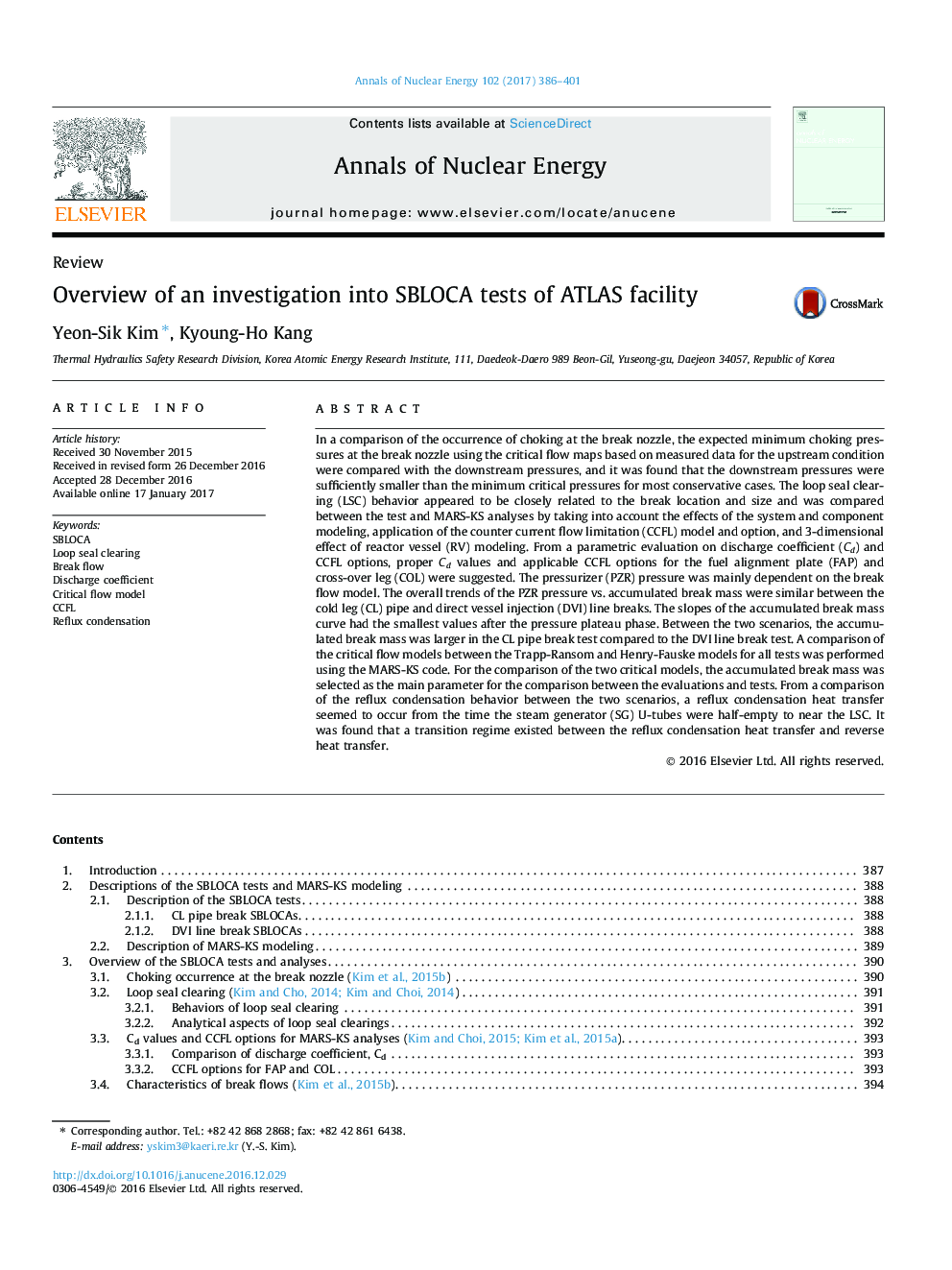| کد مقاله | کد نشریه | سال انتشار | مقاله انگلیسی | نسخه تمام متن |
|---|---|---|---|---|
| 5475334 | 1521094 | 2017 | 16 صفحه PDF | دانلود رایگان |
عنوان انگلیسی مقاله ISI
Overview of an investigation into SBLOCA tests of ATLAS facility
دانلود مقاله + سفارش ترجمه
دانلود مقاله ISI انگلیسی
رایگان برای ایرانیان
کلمات کلیدی
موضوعات مرتبط
مهندسی و علوم پایه
مهندسی انرژی
مهندسی انرژی و فناوری های برق
پیش نمایش صفحه اول مقاله

چکیده انگلیسی
In a comparison of the occurrence of choking at the break nozzle, the expected minimum choking pressures at the break nozzle using the critical flow maps based on measured data for the upstream condition were compared with the downstream pressures, and it was found that the downstream pressures were sufficiently smaller than the minimum critical pressures for most conservative cases. The loop seal clearing (LSC) behavior appeared to be closely related to the break location and size and was compared between the test and MARS-KS analyses by taking into account the effects of the system and component modeling, application of the counter current flow limitation (CCFL) model and option, and 3-dimensional effect of reactor vessel (RV) modeling. From a parametric evaluation on discharge coefficient (Cd) and CCFL options, proper Cd values and applicable CCFL options for the fuel alignment plate (FAP) and cross-over leg (COL) were suggested. The pressurizer (PZR) pressure was mainly dependent on the break flow model. The overall trends of the PZR pressure vs. accumulated break mass were similar between the cold leg (CL) pipe and direct vessel injection (DVI) line breaks. The slopes of the accumulated break mass curve had the smallest values after the pressure plateau phase. Between the two scenarios, the accumulated break mass was larger in the CL pipe break test compared to the DVI line break test. A comparison of the critical flow models between the Trapp-Ransom and Henry-Fauske models for all tests was performed using the MARS-KS code. For the comparison of the two critical models, the accumulated break mass was selected as the main parameter for the comparison between the evaluations and tests. From a comparison of the reflux condensation behavior between the two scenarios, a reflux condensation heat transfer seemed to occur from the time the steam generator (SG) U-tubes were half-empty to near the LSC. It was found that a transition regime existed between the reflux condensation heat transfer and reverse heat transfer.
ناشر
Database: Elsevier - ScienceDirect (ساینس دایرکت)
Journal: Annals of Nuclear Energy - Volume 102, April 2017, Pages 386-401
Journal: Annals of Nuclear Energy - Volume 102, April 2017, Pages 386-401
نویسندگان
Yeon-Sik Kim, Kyoung-Ho Kang,